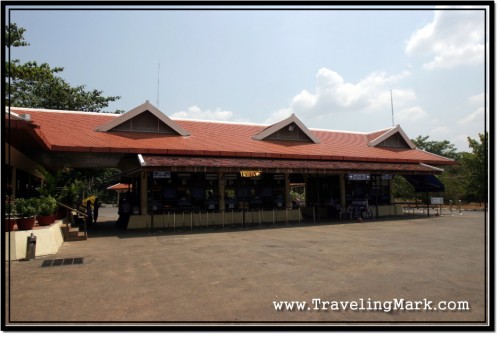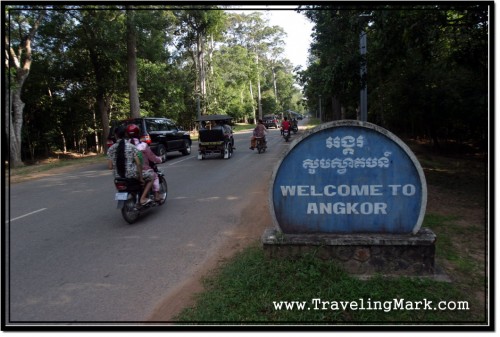I did my homework prior to entering Angkor Archaeological Area and found out about the cost of entrance fees. This was quite an important bit of information I needed in order to plan out the budgeting and exploration schedule. What I knew before coming to Angkor was the following entrance fee schedule:
- 1 Day Entrance Fee to Angkor: $20 US
- 3 Days Entrance Fee to Angkor: $40 US
- 7 Days Entrance Fee to Angkor: $60 US
One day pass is good enough to explore main and most popular ancient temples which are located along the small circle that most visitors take. This includes Angkor Wat, South Gate of Angkor Thom, Central Angkor Thom with Bayon, Terrace of the Elephants and Terrace of the Leper King, Victory Gate, Thommanom, Ta Keo, Ta Prohm, Bantey Kdei, Sras Srang and Prasat Kravan ruins.
Three day pass allows a visitor to explore all major temples as well as some less frequented ones along the grande circle with enough time to dedicate to your favourite spots. On top of what you would see on a single day pass, you would also get a chance to explore Preah Khan, Neak Pean, Ta Som, East Mebon, Banteay Samre and Pre Rup as well as quite possibly a bunch of smaller ruins.
Seven day pass is for serious explorers and gives you enough time to explore all of the main and smaller temples of the main area, as well as some of the more remote temples, such as Banteay Srey (Citadel of the Woman) or Rolous Group temples (Bakong, Preah Ko, Lolei). You could also visit the West Mebon, which is submerged in the waters of the West Baray moat.
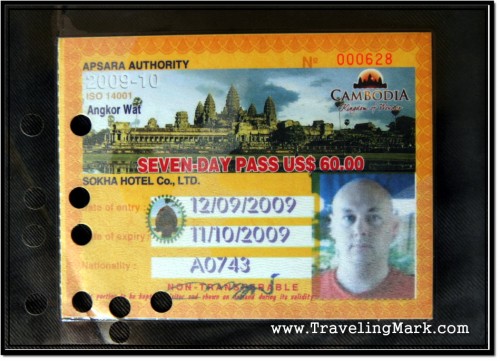
Because Angkor temples were on top of my must see before I die list, I definitely wanted to pay the price of a 7 days pass and explore the area thoroughly. At the same time I realized that because entrance fees are rather steep (keep in mind that average monthly wage in Cambodia is $90) for Cambodia, so I wanted to make sure I use each day to the fullest.
Because of that, I would not consider going on a rainy day. I wanted to take some nice pictures while I’m exploring and that’s virtually impossible in downpours typical for rainy season in South East Asia (unless you have some specialty water resistant equipment and don’t mind getting soaked the hell out of).
I’ve been patiently waiting for the right day and it’s paid off. The biggest disadvantage of multi day passes was the fact that you had to use them up in consecutive days. I did not see the possibility of scoring 7 consecutive days of sun in rainy season but I remained hopeful and determined.
Luckily, there was serious talk that Apsara Authority will be changing this rule and multiday passes will be modified to allow for use over a period of time, rather than consecutively. If you bought a 3 days pass, you would have a week to use it and a month if you bought a 7 days pass. This sounded more like it. If this was put in place, I’d be able to go at it full throttle on a nice day and if the following day turned out rainy, I would not go and would wait until the next sunny day to make full use of my 7 day pass.
Luckily for me, the consecutive-days-use rule was terminated on the day I didn’t get to go because I was with Ha. When I got to the ticket booth on my attempt to get the first glimpse of Angkor Wat, they were just replacing the signs with new ones which stated that you could use multiday passes over an extended period of time, not consecutively. That was great news and there truly was nothing in my way to start exploring the ancient temples of Angkor.
The rule of non consecutive days is still in effect. If you buy a 3 day pass, you can use your three days over a period of 1 week and if you buy a 7 day pass, you can use your 7 days over a period of 1 month (it will terminate on the day prior to the day of purchase of the following month).
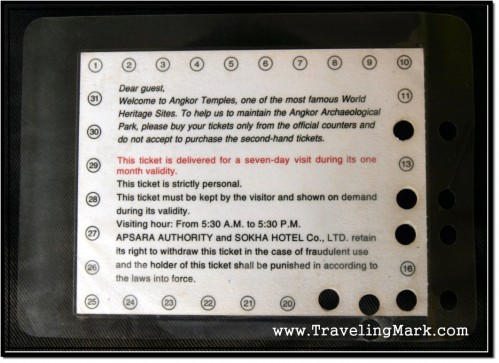
Three and Seven day passes will have your mugshot on it. If you have a passport photo on you, you will be asked to provided it to the person processing your ticket which generally speeds up the processing and sets you on the way to Angkor quickly. However if you don’t, you will just be sent to another window where your mugshot will be taken with a webcam and this image will be used to print on a pass. This is how I had mine processed. It was an extra step I needed to do but it only delayed me a few minutes.
If you wish to have a pretty picture on your pass to Ankor and have yourself processed faster, then bring one passport sized photo with you. Either way, try to show up for the purchase of your entrance ticket before 7.30am as after that time buses full of tourists from Japan and Korea start coming and none of them will have a passport photo so they all will wait to get a mugshot taken. This could put you back quite a while – if you get there right after half a dozen buses full of elderly Asian people with cameras hung on their necks.
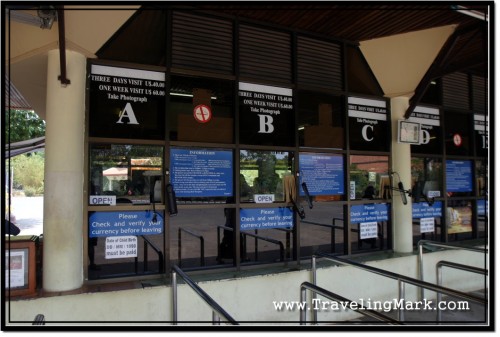
Free Sunset
If you purchase your entrance pass at 5pm or later, it’s validity won’t come to an effect until the following day but you will be allowed to enter the Angkor Archaeological Area and enjoy a free sunset.
